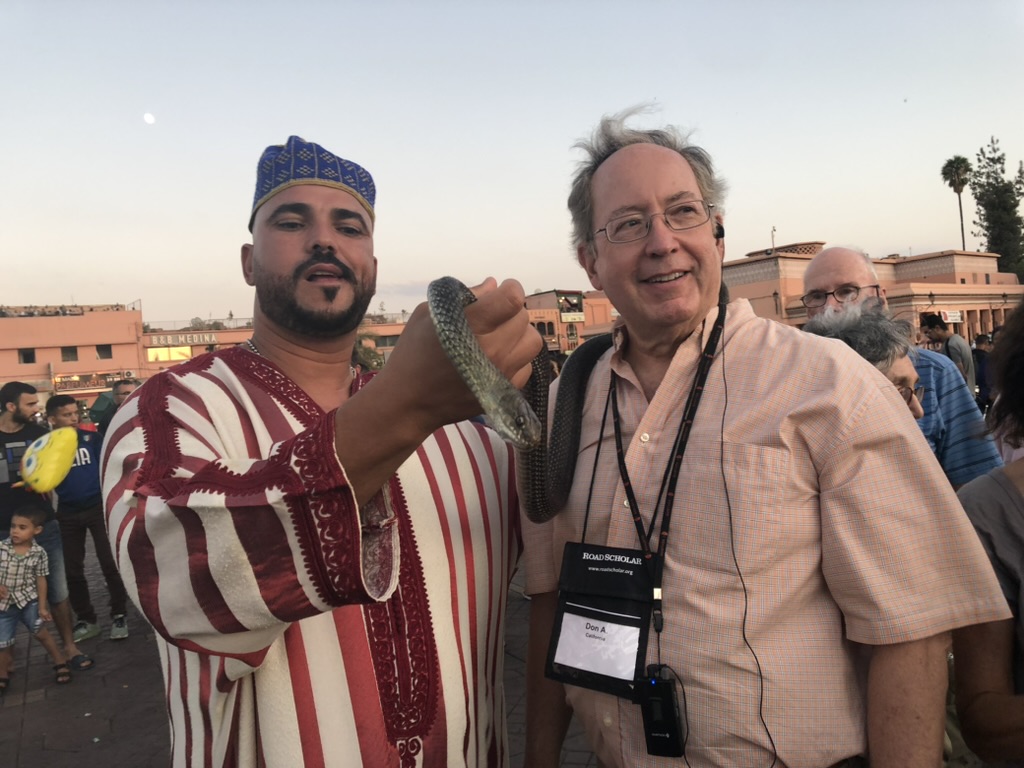Travelers love to find gems in unexpected places. The DIA, Detroit Institute of the Arts, is one of those.
According to this website, there are 35,000 museums in the United States. They listed the top 30, one of which is the DIA (#13). Yes, it’s in Detroit, Michigan.
A famous installation is that of the Detroit Industry Murals (1932–1933) by Diego Rivera. They are permanent as they were painted directly onto the walls.
 I’m looking at one of the smaller frescos, and my husband and I are standing in front of an entire wall of one of the murals.
I’m looking at one of the smaller frescos, and my husband and I are standing in front of an entire wall of one of the murals.

Rivera’s murals here… “create a tribute to industry and workers. These murals reveal Rivera’s fascination with industrial processes — and his critique of the political and social realities of capitalist enterprise.” (Source: DIA information piece about the murals.)
Tiff Massey
The exhibit (on view through May 2025) that tickled me the most was that of Tiff Massey. I had never heard of her, which is why we go to museums, right? From her website, we learn “…She was the first Black woman to earn an MFA in metal smithing from the Cranbrook Academy of Art. She draws on 1980s hip-hop culture and her experiences as a Detroit native to examine the concept of adornment as an examination of the African diaspora and contemporary issues of race, class, and popular cu
diaspora and contemporary issues of race, class, and popular cu lture.”
lture.”
I like her work because she makes statements about the connection of community, jewelry, and large works of art that put her “art in a context” — a theme of the DIA, according to our docent.
I’d like to put all her work here, but a better idea is for you to go to Detroit before May 2025 and see this exciting, inspirational installation. You’ll love it.
By the way, I’m making a general statement here that I hope to repeat as my travel blog grows.
“Always take a guided tour of any place you can when traveling. It helps you know what you want to see and see what you’d like to know.” — Kathryn Atkins, Blogger, “Gone on an Adventure ”
And speaking of curation (we weren’t but I wanted to see if you were paying attention), the museum houses 65,000 separate pieces of artwork. At any one time, they exhibit about 10% of them, sometimes because the artwork is too fragile to the light and other times because the featured work does have to be rotated so we get to see it all eventually. As in, “keep coming back!”
We will. 🙂




 I’m currently reading Ready for Anything (RFA) by David Allen for the second time. The first time I read RFA was in 2016, and it fell pretty closely on the heels of
I’m currently reading Ready for Anything (RFA) by David Allen for the second time. The first time I read RFA was in 2016, and it fell pretty closely on the heels of  This IS me! I’m staring into space in the fall of 2022. I am seventy-two. I’m small. And tall. I have no clue at all.
This IS me! I’m staring into space in the fall of 2022. I am seventy-two. I’m small. And tall. I have no clue at all.

 I’m often asked, “What was the inspiration for this novel?”
I’m often asked, “What was the inspiration for this novel?”